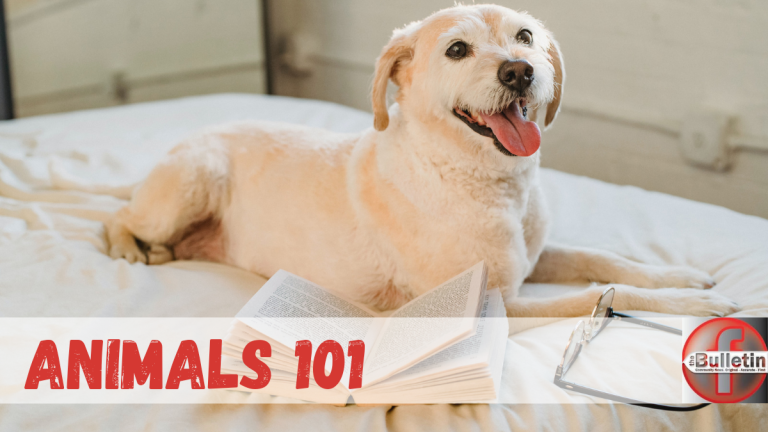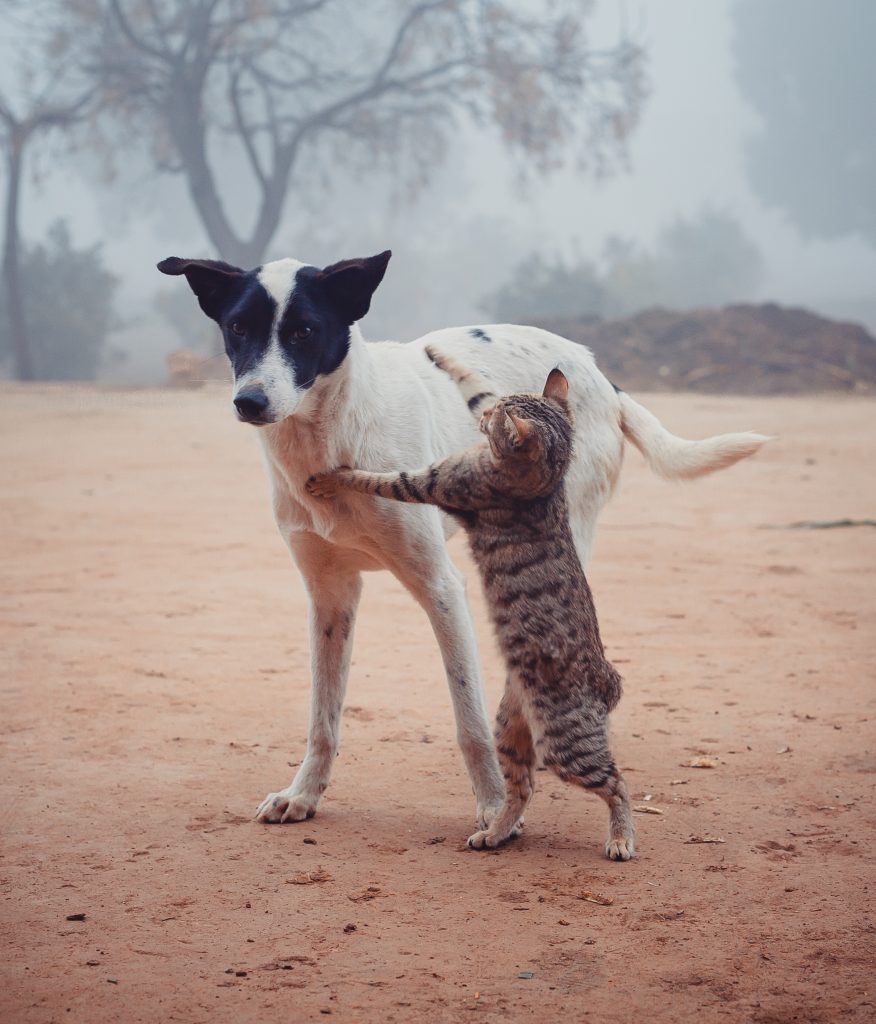
EXPLORING THE INFLUENCES ON ANIMAL BEHAVIOUR.
Understanding why animals behave the way they do, especially our beloved cats and dogs, requires looking at many different aspects. Their behaviour is influenced by things like their genes, how they were raised, their surroundings, and how they interact socially. By observing and understanding these factors, we can strengthen our bond with our furry friends and make sure they have what they need to be happy and healthy.
As caretakers of these cherished companions, it’s our responsibility to recognize and meet their needs in a world that can be challenging for them. This includes creating environments that keep them engaged, making sure they socialize well, and establishing comforting routines.
Beyond just providing food and shelter, we’re tasked with managing their physical health and nurturing their emotional well-being. By actively engaging with them, understanding their unique personalities, and addressing their needs early on, we can create an environment where they not only survive but thrive.

DOES BREED PREDICT BEHAVIOUR?
A 2022 dog genomic study from UMass investigated whether the breed of individual dogs could predict their temperament and behaviour. In this study, they surveyed 18,385 dog owners and sequenced the DNA of 2,155 dogs. They investigated 8 behaviours, human sociability, arousal level, toy-directed motor patterns, biddability, agonistic threshold, dog sociability, environmental engagement, and proximity seeking. Interestingly, the results showed that while breed did explain many physical characteristics, it explained just 9% of variations in behaviour. No behaviours were unique to any specific breed, so Labradors aren’t the only sociable breed around! Some behaviours were more consistent when considering breed ancestry, such as their responsiveness to commands. However, other behaviours, like how easily a dog gets scared, showed less variation between breeds.
That said, to understand a breed and their behaviour better, you need to also understand what they were originally bred for because we can’t deny genetics even though that is only one of many factors that influence behaviour. I agree with Dr. Judy when she says that while some breed stereotypes can be true, it is best to treat the pet in front of you, as an individual.

WHAT DOES INFLUENCE BEHAVIOUR?
According to certified professional dog trainer Victoria Schade, writing for PetMD: “While there are aspects of a dog’s temperament that can seem hardwired, personality is a combination of nature and nurture.”
She lists eight factors that can influence the way a dog’s behaviour develops:
- Maternal influence — A mother dog’s behaviour during weaning can impact a puppy’s willingness to interact with people. For example, skittish mothers might model behaviours that puppies adopt.
- The amount and quality of early socialization — Puppies raised without frequent positive exposures to novel sights, sounds, locations, and beings might be less confident, easily startled, and slower to recover from stress.
- Environment — Dogs who grow up in households where all their needs are met will likely develop differently than dogs who live in deprived households, like those kept outside with minimal human contact.
- Ongoing socialization as the dog matures — While early socialization is critical for developing confident and behaviourally appropriate puppies, socialization is a muscle that needs to be worked throughout a dog’s life. Adult dogs who don’t have opportunities for positive experiences with new environments and people might be less likely to react to the world confidently.
- Level of daily exercise — Many behavioural challenges stem from a lack of adequate physical and mental exercise. Dogs who seem to be “hyper” or “naughty” probably aren’t getting enough exercise.
- Training — Training is more than just a way to ensure polite behaviour; it’s also a passport to the world, as well-trained dogs are usually able to feel comfortable in a variety of settings.
- Diet — Dogs fed a balanced diet of healthy food will develop and behave differently than dogs eating lower-quality foods. Dogs who eat foods with too many fillers and artificial ingredients might be more likely to have energy peaks (like overexcitability) and crashes (like lethargy).
- Caregiver personality — We love our dogs because they’re such wonderful companions, and that bond between us can lead to our dogs mirroring our behaviour. High-strung, nervous pet parents might wind up with a dog that has similar challenges.

AN ACTION PLAN FOR UNDERSTANDING YOUR PETS BETTER
Here are some actions you can take to better understand your pet and to help them cope in this human world we force them to live in.
- Understanding Your Pet’s Needs: Take the time to learn about the specific needs and behaviours of your pet’s species and breed. Research their natural instincts, activity levels, and social requirements to better understand how to meet their needs. Do this before you choose a pet too!
- Providing a Stimulating Environment: Create an enriched environment that offers mental and physical stimulation. Provide toys, puzzles, and activities that cater to your pet’s natural behaviours, such as hunting, chasing, or exploring. Rotate (and clean) toys regularly to keep them engaged and prevent boredom.
- Establishing Routine and Consistency: Pets thrive on routine and consistency. Establish a regular schedule for feeding, exercise, and playtime. Consistency helps reduce stress and anxiety, providing a sense of security for your pet.
- Socialization and Training: Socialize your pet from a young age to help them become well-adjusted and confident around people, other animals, and new environments. Positive reinforcement training techniques can help reinforce good behaviour and strengthen the bond between you and your pet.
- Ensuring Physical and Mental Health: Schedule regular veterinary check-ups to monitor your pet’s health and address any medical concerns promptly. Provide a balanced diet, regular exercise, and mental stimulation to support their overall well-being.
- Creating a Safe and Comfortable Environment: Ensure your home is safe and pet-friendly, free from potential hazards such as toxic plants, small objects that can be swallowed, or accessible cords and wires. Provide a comfortable and secure space where your pet can rest and retreat when they need a break.
- Recognizing Signs of Stress or Discomfort: Learn to recognize signs of stress, anxiety, or discomfort in your pet, such as changes in behaviour, appetite, or grooming habits. Take proactive steps to address any underlying issues and provide reassurance and support.
Learn more about dog body language here.
- Building a Strong Bond: Spend quality time bonding with your pet through activities they enjoy, such as grooming, training, or simply cuddling on the couch. Building a strong bond based on trust and mutual respect strengthens your relationship and enhances your pet’s overall well-being.
By following this action plan and remaining attentive to your pet’s needs, you can create a supportive and nurturing environment that helps them thrive physically, mentally, and emotionally which in turn can affect their behaviour positively too!

GET PROFESSIONAL HELP
Remember that NOT ALL TRAINERS ARE EQUAL, NOT ALL TRAINERS ARE ETHICAL!
Deciding what type of dog professional, you need can certainly be a challenge especially as the dog industry is unregulated. There are basically three sectors involved in dog training and behaviour. What to look for and who to go to will depend on what your and your pet’s needs are.
- Dog Trainer
- Dog Behaviour Consultant / Behaviourist
- Veterinary Behaviourist
Knowing who you are looking for can help demystify the journey of finding an ethical professional to work with. One of the most important aspects is whether they use fear-free positive reinforcement methods. Remember, when you ask questions about a dog professional’s qualifications, this should be met with clear, open and appreciative responses – not smoke and mirrors. We must demand the best for our pets. If you feel uncomfortable with this trainer/ behaviourist then leave because it is your responsibility to protect your pet too. When a behaviour issue arises, we always advise a vet visit first to rule out any health issues. Find a qualified behaviourist here.
Understanding animal behaviour is not straightforward because many factors contribute to it. Genetics, environment, socialization, and individual experiences all work together to shape the distinct personalities of the animals we share our lives with. By exploring these influences with care and interest, we can learn a lot about their needs, wants, and how they communicate. With this knowledge, we can build strong bonds with our pets and ensure they are happy and well-cared for throughout their lives.
Next week we will look at choosing the right bowls for your pets and some feeding tips.
WHEN YOU KNOW BETTER, DO BETTER!